1. One end of a uniform wire of length L and of weight W is attached rigidly to a point in the roof
and a weight \[W_{1}\] is suspended from its lower end. If S is the area of cross-section of the wire, the stress in the wire at a height 3L/4 from its lower end is
a) \[\frac{W_{1}}{S}\]
b) \[\frac{W_{1}+\left(W\diagup4\right)}{S}\]
c) \[\frac{W_{1}+\left(3W\diagup4\right)}{S}\]
d) \[\frac{W_{1}+W}{S}\]
Explanation:
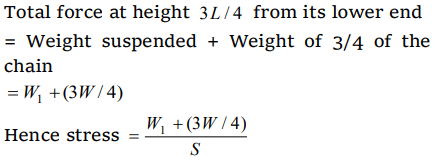
2. There are two wires of same material and same length while the diameter of second wire is 2 times the diameter of first wire, then ratio of extension produced in the wires by applying same
load will be
a) 1 : 1
b) 2 : 1
c) 1 : 2
d) 4 : 1
Explanation:

3. A particle of mass m is under the influence of a force F which varies with the displacement x according to the relation \[F=-kx+F_{0}\] in which k
and \[F_{0}\] are constants. The particle when disturbed will oscillate
a) about x=0,with \[\omega\neq \sqrt{k\diagup m}\]
b) about x=0,with \[\omega= \sqrt{k\diagup m}\]
c) about x= \[F_{0}\diagup k\] ,with \[\omega= \sqrt{k\diagup m}\]
d) about x= \[F_{0}\diagup k\] ,with \[\omega\neq \sqrt{k\diagup m}\]
Explanation:

4.An elastic material of Young's modulus Y is subjected to a stress S. The elastic energy stored per unit volume of the material is
a) \[\frac{2Y}{S^{2}}\]
b) \[\frac{S^{2}}{2Y}\]
c) \[\frac{S}{2Y}\]
d) \[\frac{S^{2}}{Y}\]
Explanation: \[\frac{S^{2}}{2Y}\]
5.The graph shown was obtained from experimental measurements of the period of oscillations T for different masses M placed in the scale pan on the lower end of the spring
balance. The most likely reason for the line not passing through the origin is that the
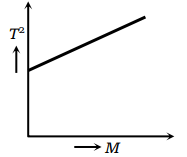
a) Spring did not obey Hooke's Law
b) Amplitude of the oscillations was too large
c) Clock used needed regulating
d) Mass of the pan was neglected
Explanation:
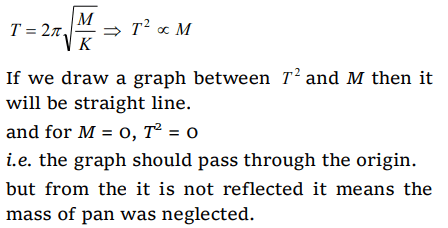
6. A graph is shown between stress and strain for a metal. The part in which Hooke's law holds good is
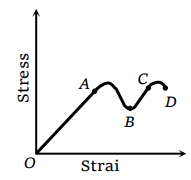
a) OA
b) AB
c) BC
d) CD
Explanation: In the region OA, stress \[\propto\] strain i.e. Hooke's law hold good.
7. In the above graph, point B indicates
a) Breaking point
b) Limiting point
c) Yield point
d) None of the above
Explanation: Yield point
8. In the above graph, point D indicates
a) Limiting point
b) Yield point
c) Breaking point
d) None of the above
Explanation: Breaking point
9. The strain-stress curves of three wires of different materials are shown in the figure. P, Q and R are the elastic limits of the wires. The
figure shows that
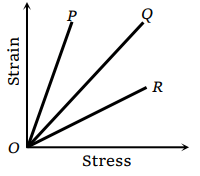
a) Elasticity of wire P is maximum
b) Elasticity of wire Q is maximum
c) Tensile strength of R is maximum
d) None of the above is true
Explanation: As stress is shown on x-axis and strain on yaxis

10.The diagram shows a force-extension graph for a rubber band. Consider the following statements
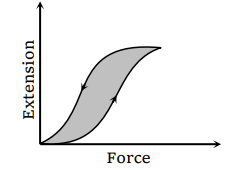
I. It will be easier to compress this rubber than expand it
II. Rubber does not return to its original length after it is stretched
III. The rubber band will get heated if it is stretched and released
Which of these can be deduced from the graph
a) III only
b) II and III
c) I and III
d) I only
Explanation: Area of hysterisis loop gives the energy loss in the process of stretching and unstretching of rubber band and this loss will appear in the form of heating